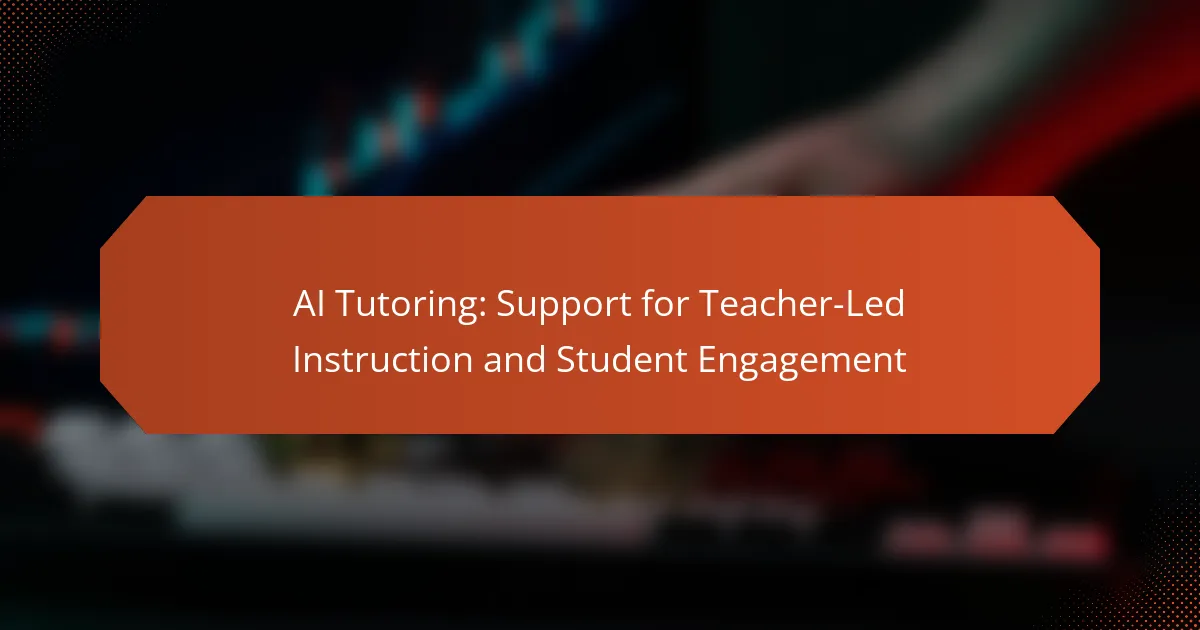AI tutoring serves as a powerful tool to support teacher-led instruction by delivering personalized assistance tailored to each student’s unique learning needs. By integrating this technology into the classroom, educators can create a more engaging and interactive environment, allowing them to focus on content delivery while AI manages individualized learning tasks.
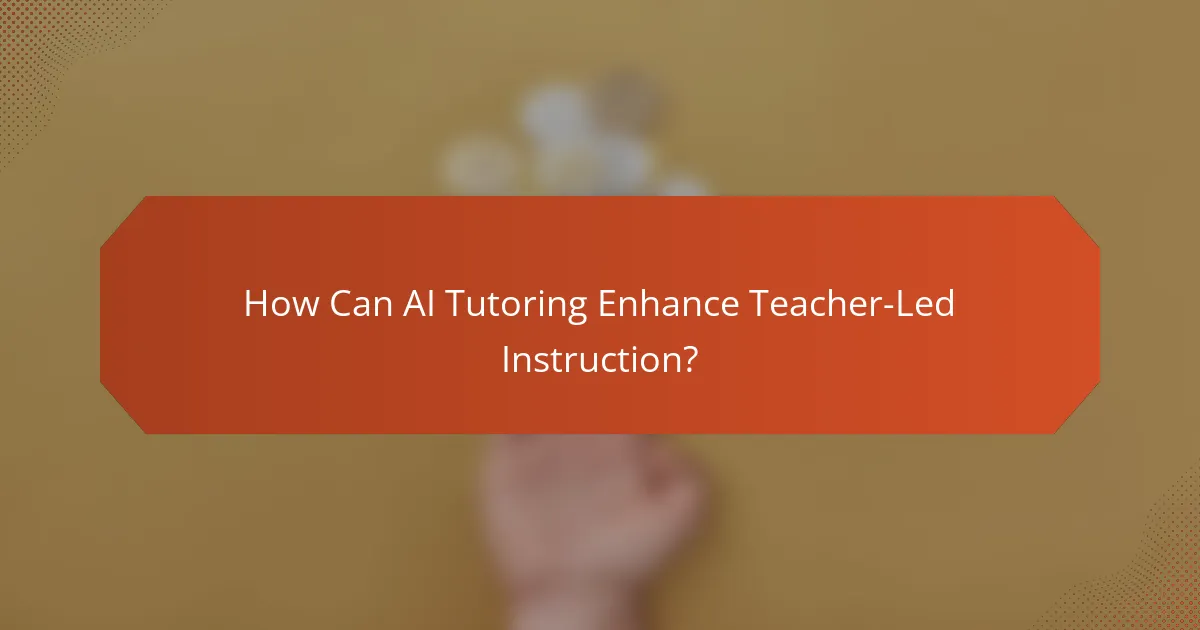
How Can AI Tutoring Enhance Teacher-Led Instruction?
AI tutoring can significantly enhance teacher-led instruction by providing tailored support that aligns with individual student needs. This technology facilitates a more engaging learning environment, allowing teachers to focus on delivering content while AI handles personalized learning tasks.
Personalized Learning Plans
AI tutoring systems can create personalized learning plans based on each student’s strengths, weaknesses, and learning pace. By analyzing student performance data, these systems suggest customized pathways that adapt as students progress, ensuring they receive the right level of challenge.
For example, if a student struggles with math concepts, the AI can recommend specific exercises and resources to reinforce those skills. This targeted approach helps students master topics before moving on, enhancing overall comprehension.
Real-Time Feedback
With AI tutoring, students receive real-time feedback on their work, allowing them to understand mistakes immediately and learn from them. This instant response mechanism encourages a growth mindset, as students can quickly adjust their strategies and improve their performance.
Teachers can also benefit from this feedback, as it provides insights into common areas of difficulty among students, enabling them to adjust their teaching methods accordingly. This collaborative feedback loop fosters a more dynamic classroom environment.
Resource Recommendations
AI tutoring platforms can recommend additional resources tailored to individual learning needs, such as videos, articles, or practice exercises. These recommendations are based on the AI’s analysis of student interactions and performance, ensuring relevance and effectiveness.
For instance, if a student excels in reading but struggles with writing, the AI might suggest writing prompts or interactive tools that enhance writing skills. This targeted resource allocation helps maximize student engagement and learning outcomes.
Data-Driven Insights
AI tutoring provides teachers with data-driven insights that highlight trends in student performance and engagement. By analyzing this data, educators can identify which teaching strategies are most effective and where students may need additional support.
For example, if data shows that a significant number of students are consistently underperforming in a specific area, teachers can address this gap with focused interventions. Leveraging these insights allows for more informed decision-making in instructional planning.

What Are the Benefits of AI Tutoring for Student Engagement?
AI tutoring enhances student engagement by providing personalized learning experiences that cater to individual needs and preferences. This technology fosters a more interactive and motivating environment, ultimately leading to improved academic outcomes.
Increased Motivation
AI tutoring systems can significantly boost student motivation by offering tailored feedback and rewards for progress. When students see their achievements recognized, they are more likely to stay engaged and strive for further improvement.
Additionally, gamified elements, such as points and badges, can make learning more enjoyable. This approach encourages students to take ownership of their learning journey, which can lead to higher levels of intrinsic motivation.
Interactive Learning Experiences
AI tutoring provides interactive learning experiences that adapt to each student’s pace and style. By utilizing multimedia content, such as videos and quizzes, students can engage with material in various ways, making learning more dynamic and effective.
These systems often incorporate real-time assessments, allowing students to receive immediate feedback on their understanding. This instant response helps clarify concepts and reinforces learning, making the educational process more engaging.
24/7 Availability
One of the key advantages of AI tutoring is its round-the-clock availability. Students can access learning resources and support whenever they need, whether it’s late at night or during weekends, accommodating diverse schedules and study habits.
This flexibility allows students to learn at their own pace, reducing stress and enabling them to revisit challenging topics as needed. With AI tutoring, help is always just a click away, fostering a more self-directed approach to learning.
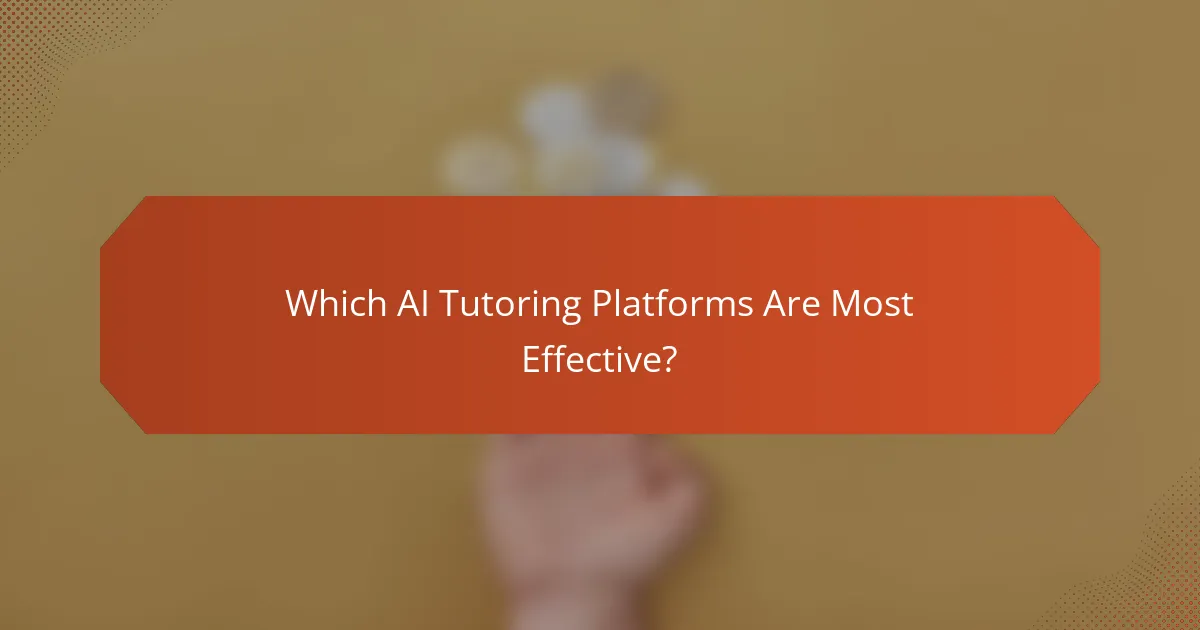
Which AI Tutoring Platforms Are Most Effective?
Effective AI tutoring platforms enhance teacher-led instruction and boost student engagement through personalized learning experiences. Key platforms like Khan Academy, Duolingo, and Carnegie Learning each offer unique features that cater to different educational needs.
Khan Academy
Khan Academy provides a comprehensive library of instructional videos and practice exercises across various subjects. Its AI-driven recommendations adapt to each student’s learning pace, helping them master concepts before moving on.
Teachers can leverage Khan Academy to assign specific lessons and track student progress through detailed analytics. This allows for targeted interventions and support where needed, ensuring that no student falls behind.
Duolingo
Duolingo focuses on language learning through gamified lessons that engage students in a fun and interactive way. The platform uses AI to tailor exercises based on individual performance, making language acquisition more effective.
Instructors can integrate Duolingo into their curriculum by encouraging students to practice outside of class. This blended approach reinforces language skills and keeps students motivated through rewards and achievements.
Carnegie Learning
Carnegie Learning specializes in mathematics education, utilizing AI to provide personalized learning paths and real-time feedback. Its platform includes adaptive learning tools that help students grasp complex concepts through practice and application.
Teachers can utilize Carnegie Learning to enhance classroom instruction by assigning specific modules that align with their lesson plans. This targeted approach helps address individual student needs while promoting collaborative learning in the classroom.
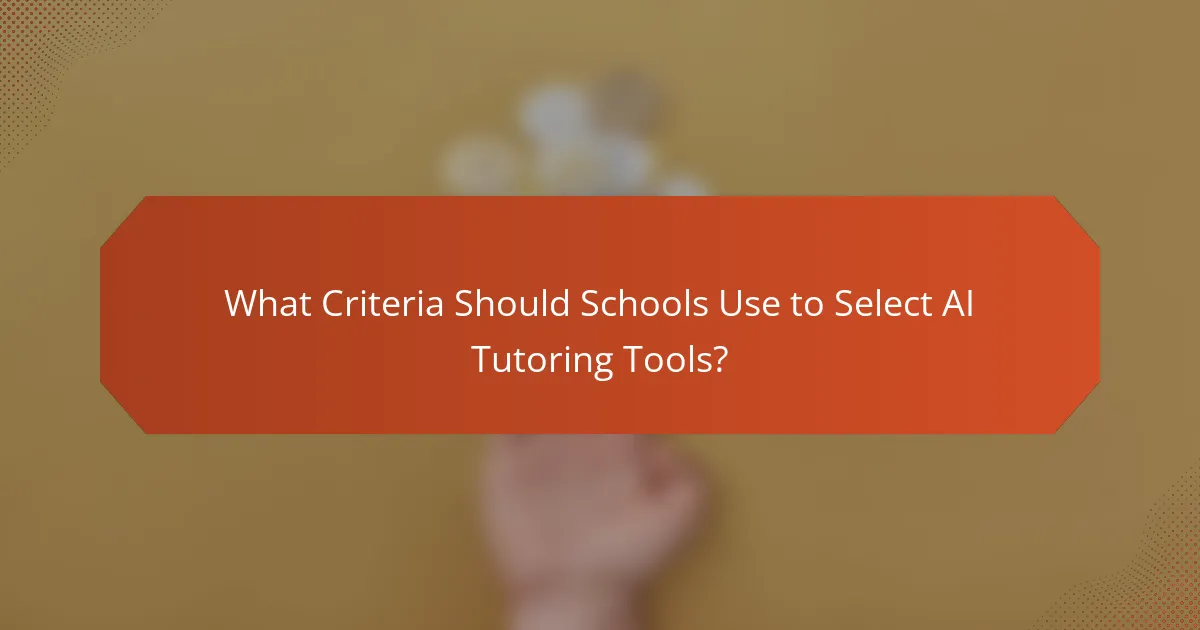
What Criteria Should Schools Use to Select AI Tutoring Tools?
Schools should consider integration with the existing curriculum, user-friendliness, and cost-effectiveness when selecting AI tutoring tools. These criteria ensure that the chosen tools enhance teacher-led instruction and engage students effectively.
Integration with Curriculum
AI tutoring tools should seamlessly align with the school’s curriculum to support learning objectives. This means they should cover the same subjects and topics that students are learning in class, providing relevant practice and reinforcement.
When evaluating tools, check if they offer customizable content that can adapt to different teaching styles and learning paces. For instance, tools that allow teachers to input their lesson plans or specific learning goals can enhance the overall educational experience.
User-Friendliness
User-friendliness is crucial for both teachers and students to maximize the effectiveness of AI tutoring tools. The interface should be intuitive, allowing users to navigate easily without extensive training.
Consider tools that provide clear instructions and support resources. A good practice is to look for platforms that offer trial periods or demos, enabling educators to assess usability before making a commitment.
Cost-Effectiveness
Cost-effectiveness involves evaluating the price of AI tutoring tools against their benefits. Schools should consider not only the upfront costs but also any ongoing fees for updates or additional features.
It’s advisable to compare different options and look for tools that offer tiered pricing based on the number of users or features needed. Schools may also explore grants or funding opportunities to offset costs, ensuring they get the best value for their investment.
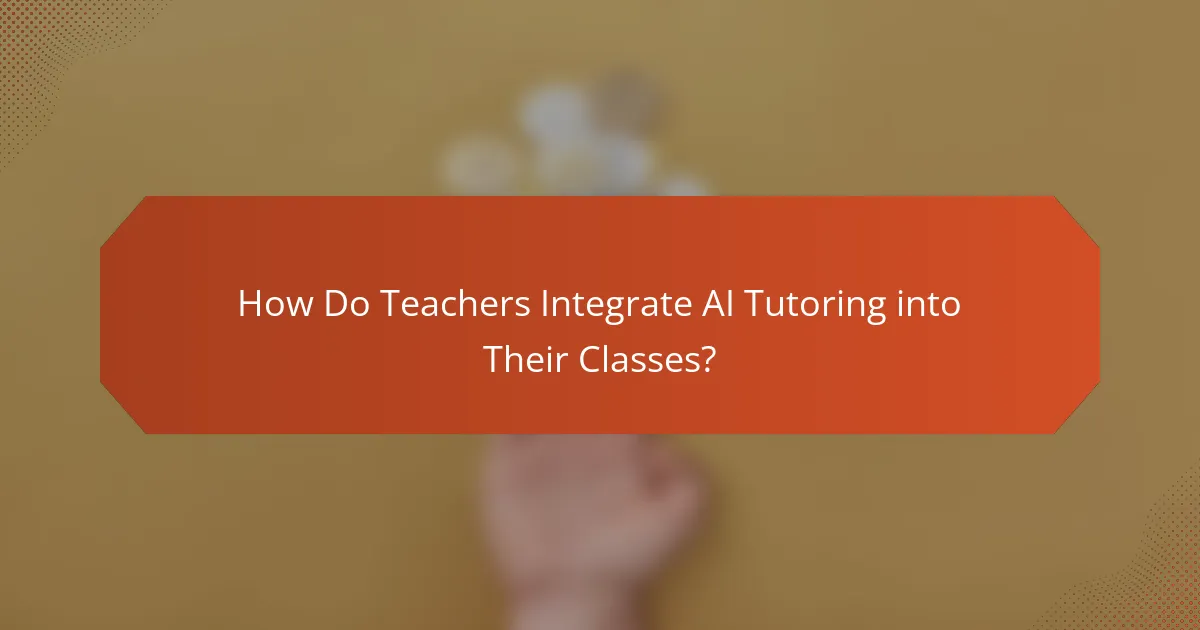
How Do Teachers Integrate AI Tutoring into Their Classes?
Teachers integrate AI tutoring into their classes by using technology to enhance traditional teaching methods. This approach allows for personalized learning experiences, enabling students to receive tailored support while teachers focus on broader instructional goals.
Blended Learning Models
Blended learning models combine face-to-face instruction with online learning, leveraging AI tutoring to facilitate this integration. For instance, teachers can assign AI-driven exercises that students complete at home, allowing classroom time to be dedicated to discussions and collaborative projects.
When implementing blended learning, it’s essential to consider the balance between in-person and digital components. A common approach is the 70-30 model, where 70% of learning occurs in the classroom and 30% online, though this can vary based on student needs and curriculum goals.
Supplemental Instruction
AI tutoring serves as supplemental instruction by providing additional resources and support outside regular class hours. This can include personalized practice problems, interactive lessons, or instant feedback on assignments, helping students reinforce their understanding of the material.
To effectively use AI tutoring for supplemental instruction, teachers should identify areas where students struggle and select appropriate AI tools that address these gaps. Regularly monitoring student progress and adjusting the AI resources accordingly can maximize the benefits of this approach.
